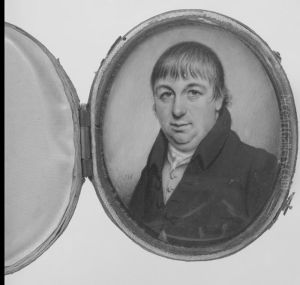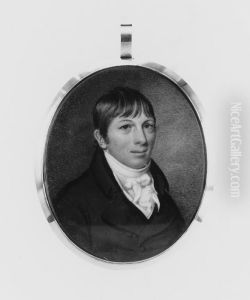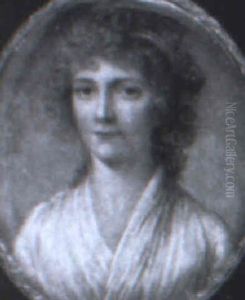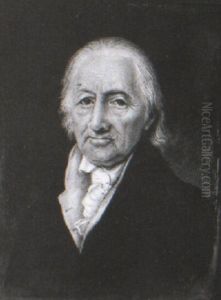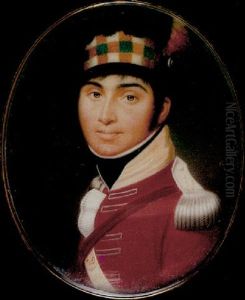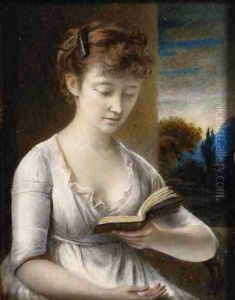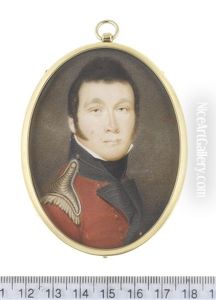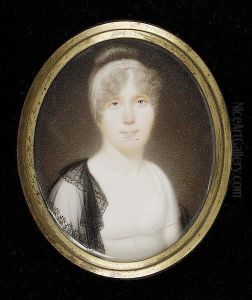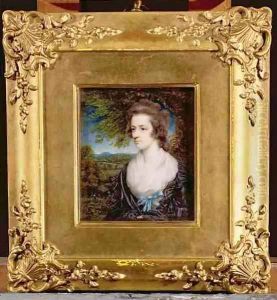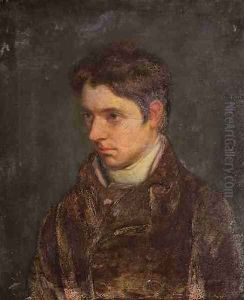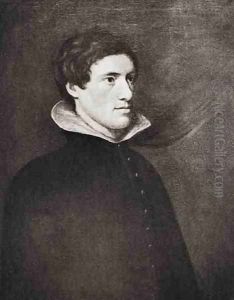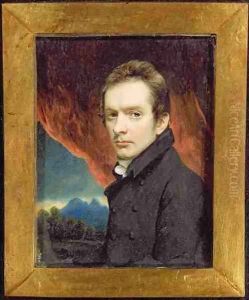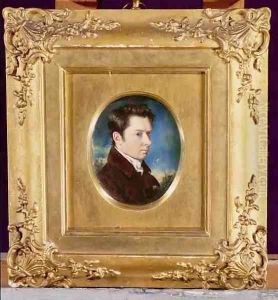John Hazlitt Paintings
John Hazlitt, born in 1767, holds a place in the annals of British art history, not only for his contributions as a painter but also as a member of the Hazlitt family, which left a significant mark on the cultural landscape of the 18th and 19th centuries. His life and career were intricately tied to the broader movements in British society and art, reflecting the shifts in taste, politics, and the role of the artist during this tumultuous period.
John Hazlitt's journey into art was influenced heavily by his surroundings and the intellectual milieu he was part of. He emerged during a time when the Romantic movement was beginning to take shape, influencing not only literature but also painting and the visual arts. His works, though not as widely recognized as those of his contemporaries, encapsulate the essence of the period, characterized by an emphasis on emotion, nature, and the expression of the 'sublime'. His connection to prominent figures of the day, including his brother William Hazlitt, the renowned essayist, critic, and philosopher, provided him with a unique vantage point from which to observe and contribute to the cultural debates of his time.
Despite facing challenges in gaining the same level of acclaim as some of his peers, John Hazlitt's dedication to his craft and his ability to capture the intricacies of human emotion and the natural world continued to earn him respect among those who were familiar with his work. His paintings, often focusing on portraits and landscapes, convey a sensitivity and a depth that speak to the complexities of the human condition. Beyond his artistic output, Hazlitt's life story reflects the broader struggles and triumphs of artists in the 18th and 19th centuries, navigating the demands of patrons, the fluctuations of public taste, and the ever-evolving landscape of British art.
John Hazlitt's death in 1837 marked the end of a career that, while perhaps not as celebrated as that of some of his contemporaries, contributed significantly to the richness of British art. His legacy, though overshadowed by the literary achievements of his brother William, remains an important part of the study of this period, offering insights into the less heralded but equally vital strands of British artistic expression. Through his paintings and his life, John Hazlitt encapsulates the spirit of an era that was at once turbulent and transformative, reflecting the enduring power of art to capture the essence of human experience.


